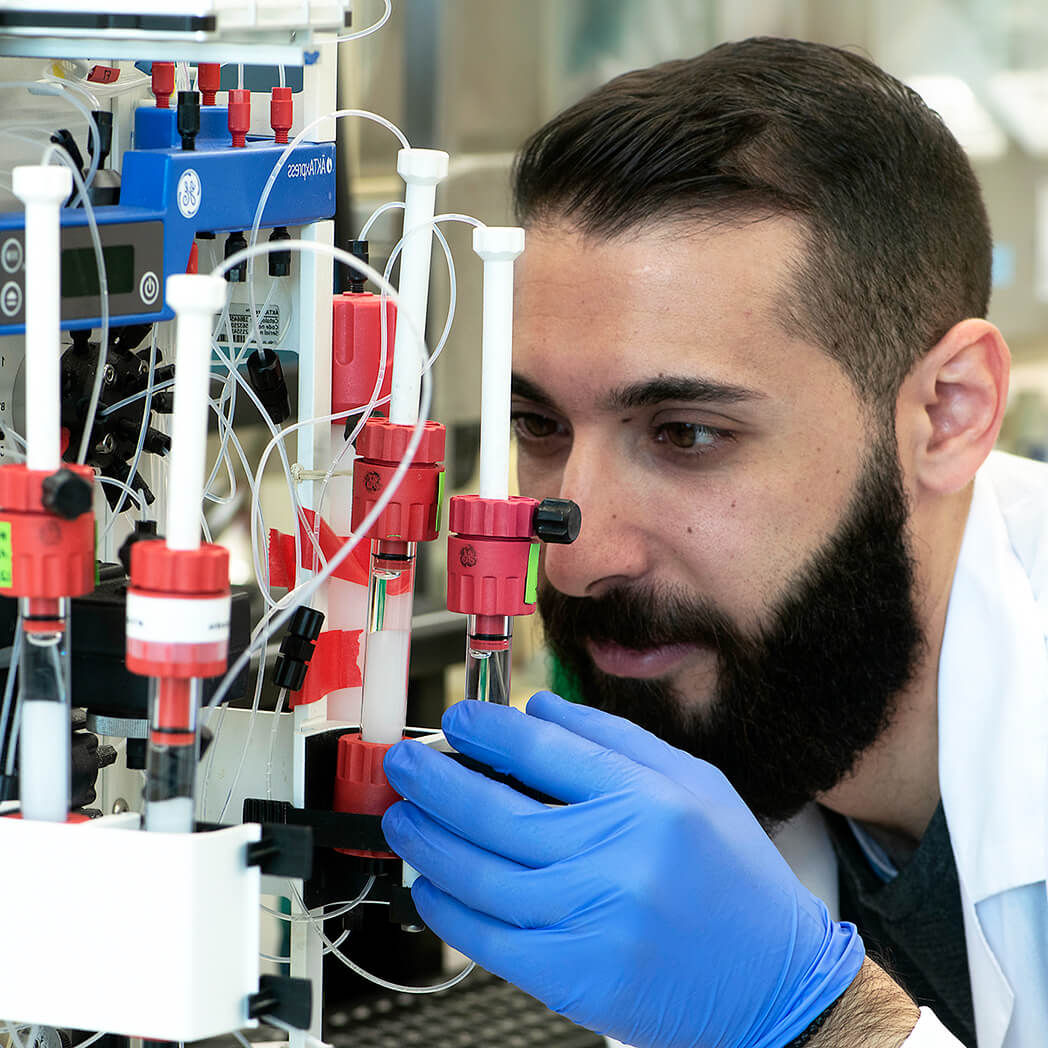Add $870 to your cart to get your free sample.
Overview
|
| Bioz Stars Product Rating | |
| The world's only objective ratings for scientific research products | |
| Mentions | |
| Recency | |
| View product page > | |
Cat #:
RTM-100
Purity: >98% (HPLC)
MW: 2207 Da
Form: Lyophilized
µ-Conotoxin SIIIA (#STC-450) is a highly pure, synthetic, and biologically active peptide toxin.
MW: 2207 Da
For research purposes only, not for human use
Applications
Our Bioassay
Our bioassay
 Alomone Labs µ-Conotoxin SIIIA inhibits NaV1.2 channels heterologously expressed in Xenopus oocytes.A. Time course of channel activity and inhibition in the presence of 1 µM µ-Conotoxin SIIIA (#STC-450) applied for 10 min (indicated as bar). Currents were elicited by application of voltage ramp from a holding potential of -80 mV to 0 mV in 100 msec, delivered every 10 seconds. B. Example of superimposed current traces before (black) and during (green) 1 µM application of µ-Conotoxin SIIIA.
Alomone Labs µ-Conotoxin SIIIA inhibits NaV1.2 channels heterologously expressed in Xenopus oocytes.A. Time course of channel activity and inhibition in the presence of 1 µM µ-Conotoxin SIIIA (#STC-450) applied for 10 min (indicated as bar). Currents were elicited by application of voltage ramp from a holding potential of -80 mV to 0 mV in 100 msec, delivered every 10 seconds. B. Example of superimposed current traces before (black) and during (green) 1 µM application of µ-Conotoxin SIIIA.
Citations (60)
Citations
Specifications
Properties
Technical Specifications
Origin Synthetic peptide
MW 2207 Da
Sequence ZNCCNGGCSSKWCRDHARCC.
Modifications Disulfide bonds between Cys3-Cys13, Cys4-Cys19, Cys8-Cys20. Z1 - Pyrrolidone carboxylic acid, Cys20 - Cysteine amide.
Peptide Content 100%
Purity >98% (HPLC)
Molecular formula C83H123N33O27S6.
Accession number Q86DU6
Biological Activity
Target NaV1.2, NaV1.3, NaV1.4 Na+ channels
Effective concentration 0.5-3 µM.
Activity µ-Conotoxin SIIIA blocks TTX-sensitive voltage-gated Na+ channels in small-diameter DRG neurons1,2. It also irreversibly blocks NaV1.2, NaV1.3 and NaV1.4 channels expressed in Xenopus oocytes in a dose- and time-dependent manner3. No inhibition is detected on NaV1.5, NaV1.7 or NaV1.8 channels4,5.
References
- Bulaj, G. et al. (2005) Biochemistry 44, 7259.
- Wang, C.Z. et al. (2006) Toxicon 47, 122.
- Schroeder, C.I. et al. (2008) J. Biol. Chem. 283, 21621.
- Yao, S. et al. (2008) Biochemistry 47, 10940.
- Leipold, E. et al. (2011) Neuropharmacology 61, 105.
Solubility and Storage
Shipping and storage The product is shipped as a lyophilized powder at room temperature. Upon receipt, it should be stored at -20°C. Protect from moisture.
Solubility Soluble in water. For long-term storage in solution, we recommend to prepare a stock solution by dissolving the product in ddH2O at a concentration X100-1000 of final working solution. Divide the solution into small aliquots and store at -20°C. Upon use, thaw the relevant vial intended for use and dilute in your desired working buffer. The preparation of fresh solutions in working buffers before use is recommended. Repeat freeze-thawing might result in loss of activity. Centrifuge all product preparations before use (10000 x g, 5 min).
Storage of solutions The reconstituted solution can be stored at 4°C for up to 1 week. For longer periods (up to 6 months), small aliquots should be stored at -20°C. We do not recommend storing the toxin in working solutions for longer than a few days. Avoid multiple freeze-thaw cycles.
Scientific Background
References
Scientific background µ-Conotoxin SIIIA is a synthetic peptide purified to homogeneity, originally isolated from the Conus striatus venom1. µ-Conotoxin SIIIA reversibly blocks TTX-sensitive voltage-gated Na+ channels in small-diameter DRG neurons.1,2 It also irreversibly blocks NaV1.2, NaV1.3 and NaV1.4 channels expressed in Xenopus oocytes in a dose- and time-dependent manner3. No inhibition is detected on NaV1.5, NaV1.7 or NaV1.8 channels4,5.
References
- Bulaj, G. et al. (2005) Biochemistry 44, 7259.
- Wang, C.Z. et al. (2006) Toxicon 47, 122.
- Schroeder, C.I. et al. (2008) J. Biol. Chem. 283, 21621.
- Yao, S. et al. (2008) Biochemistry 47, 10940.
- Leipold, E. et al. (2011) Neuropharmacology 61, 105.
Last Update: 08/01/2025

